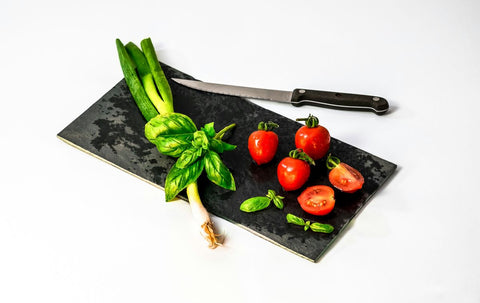It's Springtime! Spring Onions Are In Season

Selecting the Right Spring Onions
When I'm at the grocery store or farmer's market, I always look for the bulbs to be small and round. The bulbs are what makes spring onions different from scallions. The bulbs can be red or white and the "leaves" get darker green as they extend from the bulb. The best spring onions are firm and have a vibrant color.
Here are a few things I keep in mind:
The leaves should be bright green with no yellowing or wilting.
Smaller bulbs usually mean a milder flavor, which certain recipes call for.
Avoid spring onions with soft spots as this is a sign of decaying.
By selecting the right spring onions, you can SPRING your recipes to the next level.
Washing and Soaking Techniques
When it comes to food prep, ensuring that your spring onions are clean and properly soaked is crucial for the best flavor. Start by removing any wilted outer layers and trim the roots. Place the spring onions in a bowl of cold water. Move them around to remove any dirt. Soak for 5 minutes; this will crisp them up. Carefully move the spring onions to a towel to dry.
When preparing your spring onions for a recipe, there are a few things to keep in mind. A sharp knife will give you a clean cut, which is especially important when using spring onions for presentations purposes. Which knife should you use? A comparison of Japanese and German steel in kitchen cutlery can be quite enlightening. Japanese knives are known for their precision, making them ideal for delicate tasks like slicing spring onions, while German knives offer durability for tougher jobs.
Cutting Methods for Best Flavor
A chef knife is always a go-to in the kitchen, and it will work great on spring onions. Its sharp blade gives you clean cuts, which helps maintain texture and flavor of the spring onions.
For more intricate work, such as finely chopping or mincing, a paring knife will do just fine. Its smaller size allows for more control and precision, which is great for adding a delicate onion flavor to dishes.
Here is a simple guide to cutting spring onions:
Use a sharp chef knife to remove the root end and any wilted parts.
Slice the spring onion lengthwise if you want a milder flavor.
For a more intense flavor, chop the spring onions using a rocking motion with your chef knife.
Remember, the quality of your kitchen knives can make a significant difference in your cooking. Dull knives can damage the cells in spring onions, causing them to lose some of their flavor. Investing in high-quality cutlery will take your culinary skills up a notch.
Storing Spring Onions for Freshness
After you've selected, washed, and cut your spring onions, making sure they stay fresh until you're ready to use them is key. Store your spring onions in a jar of water with the bulbs facing down. This will keep them fresh for up to a week. Just be sure to top off the water and change it when it turns cloudy.
For a dry storage option, wrap the spring onions in paper towels and place them in a plastic bag. Poke some holes in the bag for ventilation. Put them into your fridge's crisper drawer, and they should remain fresh for up to five days.
Despite our best efforts, sometimes spring onions will start to wilt before we are ready to use them. At room temperature, they'll last about two days. If your spring onions are starting to wilt, consider using them in a soup or as flavoring to a roast. Just make sure to keep them out of direct sunlight to prevent wilting.



